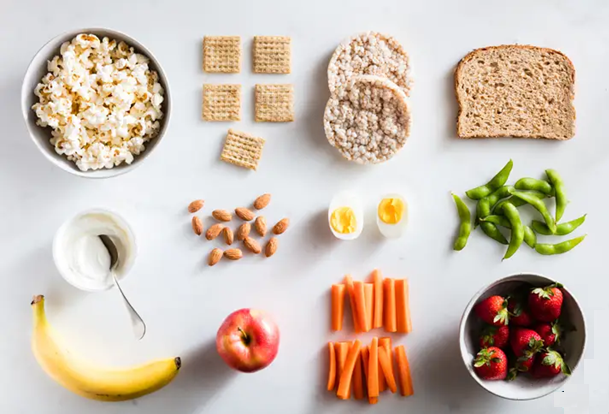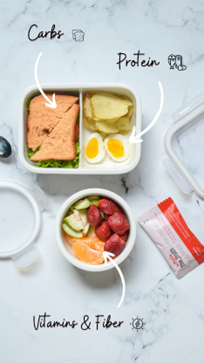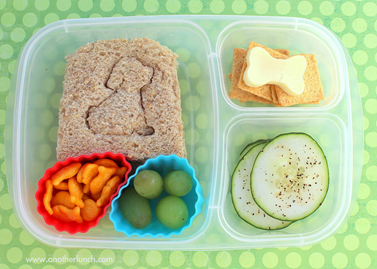Fuel Your Morning
Quick & Nutritious Breakfast Ideas


In our fast-paced lives, finding time for a healthy breakfast can be challenging. However, incorporating a nutritious breakfast into your morning routine is crucial for maintaining focus and energy throughout the day.
Ideally, you should have breakfast within one hour of waking up. After a night of sleep, your body has been fasting, and breakfast is the opportunity to “break the fast.” Skipping this meal can push your body into starvation mode, which may lead to weight gain, diabetes, and a slowed metabolism. It’s important to start your day with nutrient-dense foods that provide essential nutrition without excessive calories.
The optimal time for breakfast is around 7 a.m. to 9 a.m., but the most important aspect is finding a meal that suits your schedule. A nutritious breakfast doesn’t have to be elaborate but it should be the most calorie-dense meal of the day (30-35%) and should be protein rich. Consider quick and easy options such as smoothies, eggs, oatmeal, fruit shakes, cereals, egg cheese paratha, or other simple recipes. These meals can be prepared in a short time and provide the essential nutrients your body needs to kickstart the day. Check our recipe book for many healthy and quick breakfast ideas.
Remember, breakfast is your first chance to fuel up for the day ahead. Prioritize quick, nutritious choices to keep yourself energized and focused, without needing to spend an hour at the table.
Eat Smart, Age Well
As we age, many of us face an increasing risk of health issues such as high blood pressure, glucose intolerance, diabetes, and obesity. It’s not uncommon to encounter these conditions in individuals entering their late forties and beyond. One significant factor contributing to these problems is our eating habits. The key to mitigating these risks often lies in adopting a healthier lifestyle and making informed dietary choices.
The Five Stages of Habit Change
Changing one’s habits can be challenging, but understanding the process can make it more manageable. Here are the five essential stages of changing a habit:
- Education: Begin by educating yourself about healthy eating and its benefits.
- Contemplation: Reflect on the importance of making dietary changes and how they can improve your health.
- Decision: Make a firm commitment to change your eating habits.
- Action: Implement the changes in your daily routine.
- Maintenance: Sustain the new habits over the long term, which is often the most challenging stage.

Building a Foundation for Healthy Eating
To embark on a journey toward better health, start with some fundamental principles:
- Never Skip Your Breakfast: Begin your day with a nutritious breakfast that includes a variety of food groups. This sets a positive tone for the rest of the day.
- Incorporate All Food Groups: A balanced diet includes:
- Fruits: Rich in vitamins, particularly Vitamin C.
- Grains: Opt for whole grains and high-fiber cereals.
- Lean Proteins: Include lean meats, poultry, fish, eggs, nuts, seeds, and legumes.
- Dairy or Alternatives: Choose reduced-fat options like milk, yogurt, and cheese.
- Vegetables and Legumes: Packed with essential nutrients and fiber.
Each food group provides key nutrients necessary for maintaining health. For instance, dairy products are great sources of calcium and protein, while fruits are essential for vitamin intake.
3. Select a Balanced Eating Plan: Choose a sustainable eating plan that incorporates a variety of foods from each group. Balance in your diet helps prevent chronic diseases and maintains healthy blood glucose levels.
4. Moderation and Portion Control: You can still enjoy your favorite foods, but do so in moderation.
Smaller portions and less frequent indulgence can help you maintain a balanced diet without feeling deprived.
5. Avoid Excess Sodium and Sugar: High sodium intake can raise blood pressure, so avoid adding extra salt to your meals. Many processed foods are high in sodium and should be consumed sparingly. Instead, rely on the natural sodium present in vegetables. Similarly, limit added sugars for better heart health.
6. Healthy Snacking: Incorporate heart-healthy snacks like almonds, which can reduce the risk of heart disease.
7. Read Food Labels: Learning to read and understand food labels helps in making healthier choices and avoiding processed foods with harmful additives and excessive chemicals.
8. Hydration: Adequate water intake is crucial for overall health. Ensure you are drinking enough water daily to keep your body properly hydrated.
By adopting these guidelines, you can improve your eating habits, reduce the risk of common age-related health issues, and promote a healthier lifestyle. Education, planning, and commitment are key to making lasting changes and achieving better health outcomes as you age.
Importance of a Nutritious School Lunchbox
A Guide for Parents and Educators

Nourishment from an Early Age
Proper nutrition is crucial from the earliest stages of life and should continue throughout one’s life. For children, adequate nourishment plays a significant role in cognitive development and learning. A well-balanced lunchbox can significantly enhance a child’s attention span and learning capabilities. Regular, nutritious meals help children remain alert and engaged throughout the school day.
Consequences of Poor Nutrition
Parents might assume that the food they pack for their children is always healthy and balanced. However, it is essential to be mindful of the nutritional content of their lunchboxes. Foods high in sugar and unhealthy fats can lead to lethargy and hinder cognitive function. Excessive sugar intake can make children feel sluggish, while a lunchbox overloaded with fats and carbohydrates may cause digestive issues and decrease overall energy levels. To support your child’s health and learning, focus on providing balanced meals that include protein, fiber, and healthy carbohydrates.
Advice for Packing a Healthy Lunchbox
Childcare and dietary habits are critical in fostering healthy eating behaviors. Parents should be well-informed about preparing nutritious lunchboxes. Here are some practical tips:
- Balance Nutrients: Ensure the lunchbox includes a variety of nutrients. Incorporate proteins, fiber, and healthy carbohydrates in a way that is both appealing and balanced.
- Avoid Sogginess: Pack foods that remain fresh and appetizing by lunchtime.
- Engage Your Child: Involve your child in meal preparation to spark their interest in different vegetables and healthy foods. This can also reduce the likelihood of them rejecting their lunch.
Role of Teachers and Schools
Teachers and school administrators play a vital role in promoting healthy eating habits. Schools should create a positive and accommodating environment for lunchtime:
- Encourage Healthy Eating: Appreciate and acknowledge children who bring healthy lunchboxes to motivate others.
- Provide Adequate Space: Ensure there is ample space for students to gather and enjoy their meals together, fostering a communal and enjoyable lunchtime experience.
Healthy Lunchbox Ideas
To inspire nutritious and delicious lunch options, consider these ideas:
- Grilled Chicken Sandwich with Vegetables
- Mixed Vegetable Wrap with a Side of Fruit
- Paratha Kebab
- Vegetable Omelette Sandwich
- Fruit-Loaded Oatmeal
- French Toast

